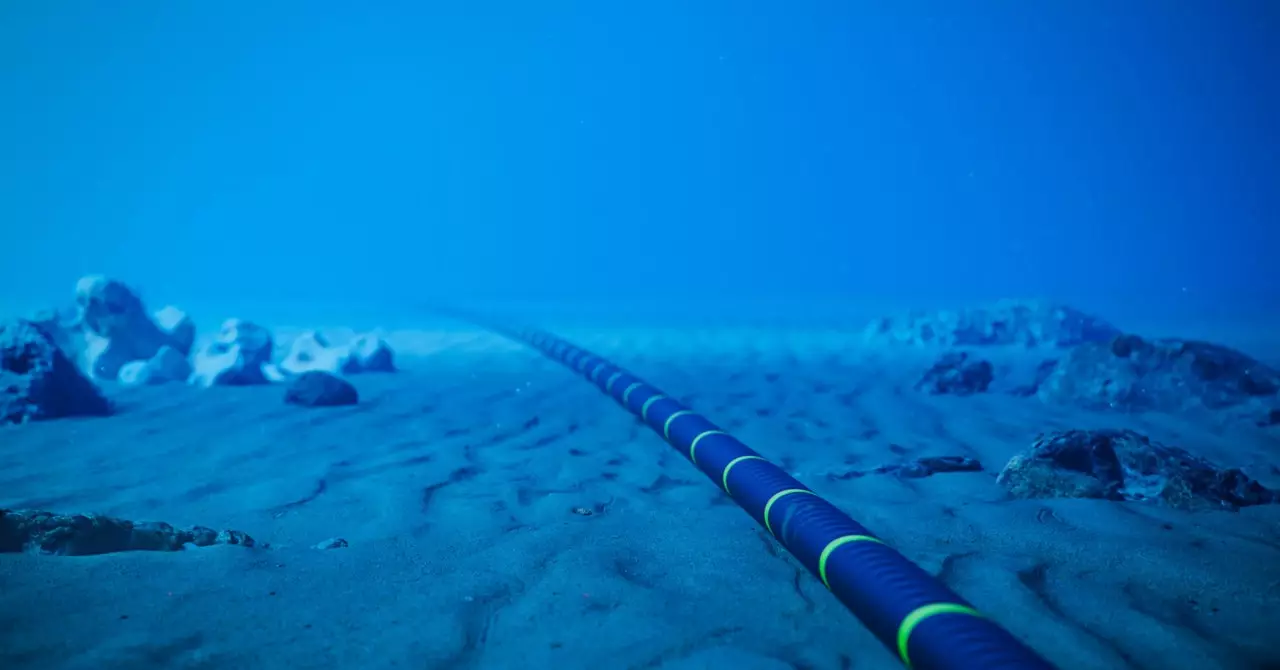Meta, the tech conglomerate previously known for its social media platforms, is taking a formidable step towards enhancing global internet connectivity with the announcement of the Waterworth Project. This ambitious endeavor aims to lay down a staggering 50,000-kilometer undersea cable, connecting five continents with high-speed, reliable internet access. This project not only underscores Meta’s commitment to improving the digital landscape but is also a strategic move to bolster its infrastructure, particularly for its artificial intelligence (AI) initiatives.
The significance of submarine cables cannot be overstated; they are responsible for over 95% of intercontinental internet traffic. With the Waterworth Project touted as a multibillion-dollar investment, it’s designed to create three new oceanic corridors—facilitating advanced connectivity necessary for a world increasingly reliant on AI technologies. The company has made grand claims about transforming the digital highways that underpin global communications, emphasizing the scalability and reliability of these new routes.
What sets the Waterworth Project apart is its ambitious plan to establish landing points in diverse locations, including India, the United States, Brazil, and South Africa. Such strategic positioning not only broadens accessibility but demonstrates Meta’s intent to serve emerging markets like India, where digital infrastructure is booming. The Indian government has expressed its aspirations for a robust digital economy; thus, Meta’s venture is poised to accelerate these ambitions.
During a recent collaboration statement between U.S. leaders and Indian officials, there was particular emphasis on undersea technologies, highlighting the geopolitical implications of such digital investments. By establishing strong connections through Project Waterworth, Meta positions itself as a critical player in the digital economy, not just within individual countries, but as a global influencer.
From a technical standpoint, the Waterworth Project promises revolutionary advancements in cable architecture, including the use of 24 fiber pairs that capitalize on deep-water routing strategies reaching depths of up to 7,000 meters. This innovation is critical for enhancing the durability and performance of submarine cables. Meta has also introduced improved burial techniques in high-risk areas, an essential development considering the potential threats from environmental disruptions and human activity such as shipping.
By prioritizing these technical improvements, Meta aims to mitigate some of the challenges associated with undersea cables, particularly those that have historically led to service interruptions. This proactive approach underscores the company’s commitment to maintaining seamless connectivity.
With the Waterworth Project, Meta is amping up its competition with established technology giants like Google, which boasts a robust portfolio of approximately 33 undersea cable routes. The distinctiveness of the Waterworth initiative lies in its ambition to be fully owned by Meta—marking a departure from previous collaborations that involved various partners. This ownership aspect presents a strategic advantage, as it enables the company to exert more control over routing and maintenance decisions.
Moreover, other tech behemoths like Amazon and Microsoft are also probing the undersea cable market, albeit with shared ownership structures or by acquiring capacities on existing lines. As the demand for data continues to surge, competition in the undersea cable sector is expected to intensify, making it imperative for companies like Meta to innovate continually.
Ultimately, the Waterworth Project is not just a fiber optic cable deployment—it’s a bold statement about the future of digital connectivity. As nations and enterprises pivot towards an AI-driven economy, projects like Waterworth play a crucial role in ensuring that the necessary infrastructure is in place. It represents an intersection of technology and geopolitics, illustrating how critical global connectivity is to economic advancement and national interests.
While the Waterworth Project may still be in its nascent phase, the vision it encapsulates reflects a transformative journey towards a more interconnected world. As Meta pushes forward with this significant undertaking, the implications for both business and social landscapes will be profound, heralding unprecedented levels of connectivity and technological advancement across multiple continents.

